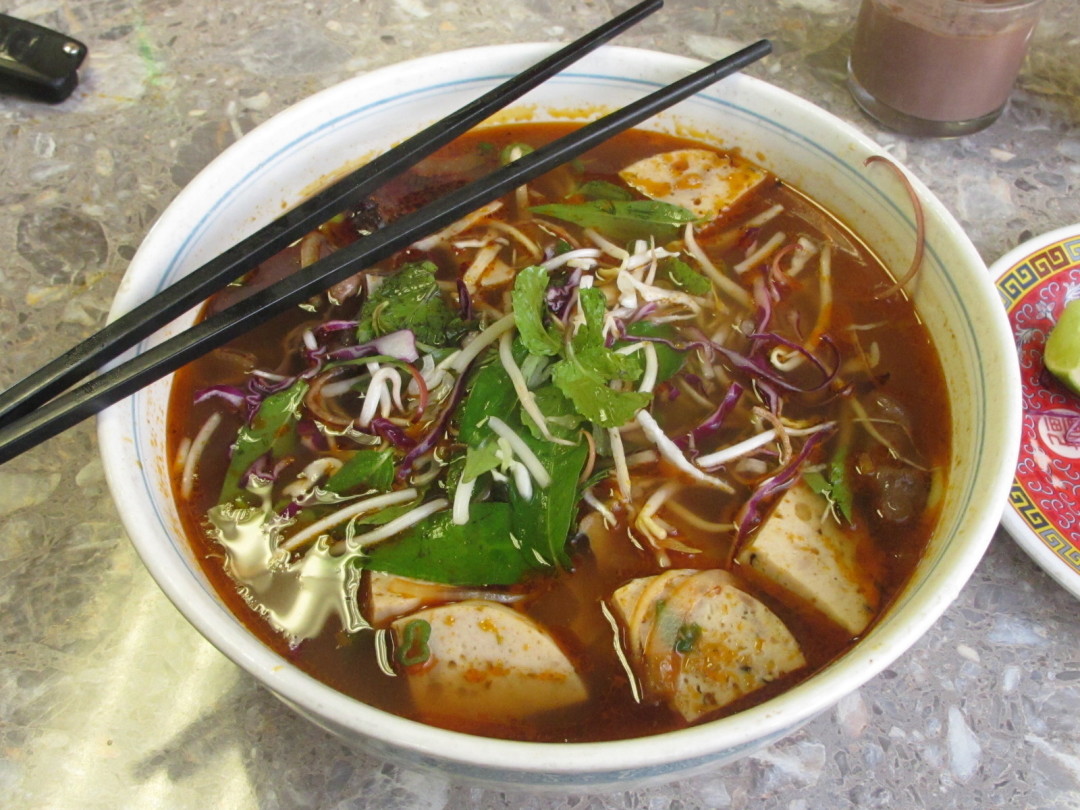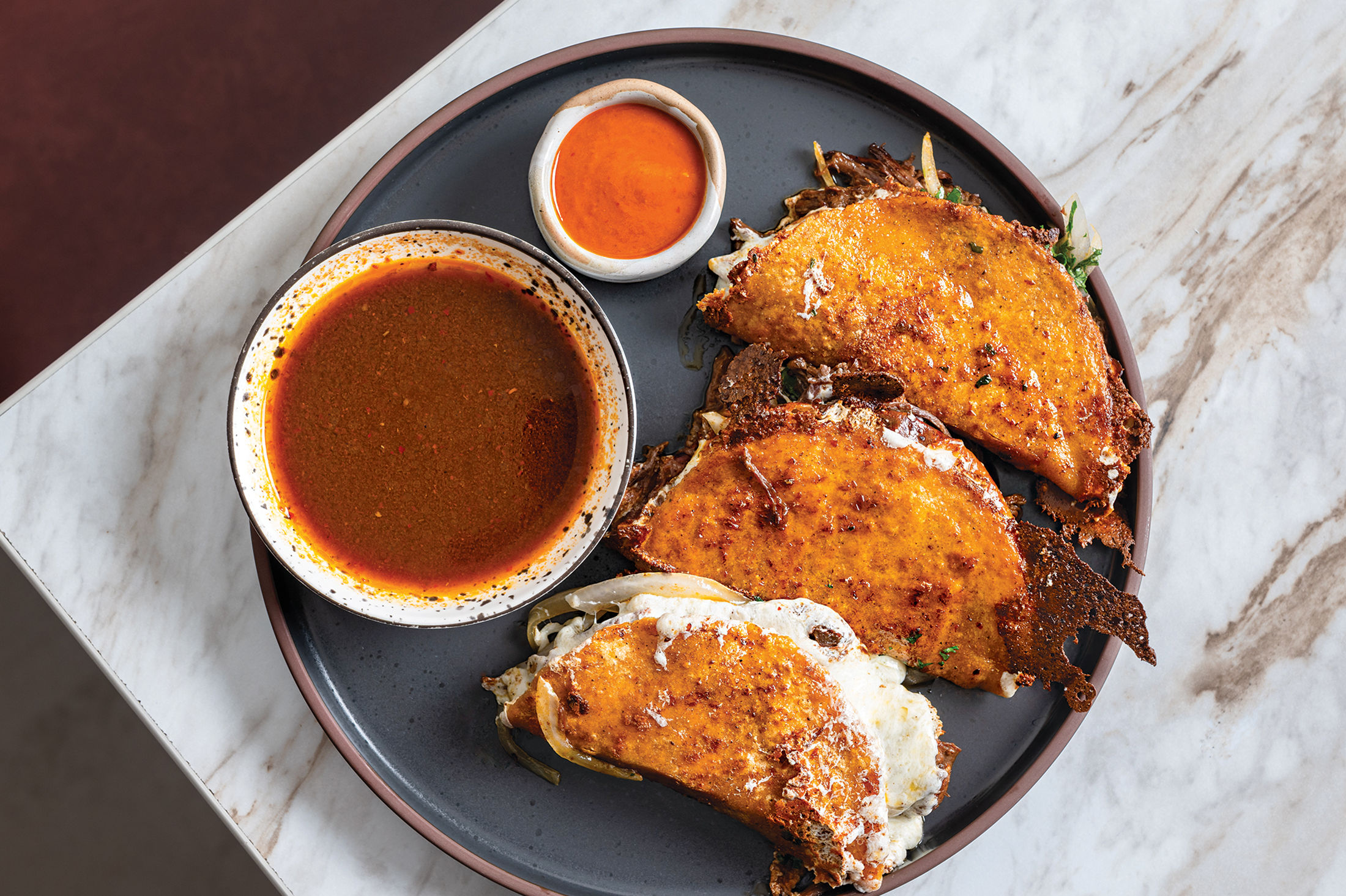Bun Bo Hue Is on Its Way Up

Ramen and other Japanese noodles are very popular in the rest of the country right now. There aren't a lot Japanese-Americans in Houston, but there is a huge Chinese and Vietnamese community. And these folks don't share in the popular perception that Japanese noodle dishes are somehow superior to other Asian noodles.
Pho has long been popular in Houston. The curly egg noodles called mi and the rice noodles called bun are well known as well. But the hottest noodle dish in Houston Chinatown is the complex soup called bun bo Hue. Bun bo Hue (pronounced "boon buh way") is simply called "bun bo" in the former royal capital city of Hue where it originated. Everywhere else, including Houston, the dish is known as bun bo Hue.
The best place to try it is Duc Chuong, which has three outposts in Houston; all three serve only this one dish. The original restaurant at 11415 Bellaire is my favorite. There is a north location on highway 249 near Beltway 8. And there is Duc Choung Midnite—the late night location—in the shopping center that is also home to Mi Cay Tung and Pho Binh by Night. I like to think of this little complex at 12148 Bellaire as "Noodle Central" since you can find excellent versions of pho, mi, and bun bo Hue all in the same strip center.
Some people mistake bun bo Hue for a variation on pho. At the Wandering Chopsticks website, the author notes that spaghetti bolognese and fettucine alfredo are both noodle dishes too, but somehow foodies don't get them mixed up.
What's the difference between bun bo Hue and pho? The bun bo Hue broth starts out with beef and lemongrass. Pho starts with beef bones and aromatic cinnamon and star anise. Pho is seasoned with fermented fish sauce. Bun bo is seasoned with mam ruoc, the funky fermented Vietnamese shrimp paste. Pho comes with various cuts of beef. Bun bo Hue comes with long-simmered thinly sliced beef shank, pig's foot, and the Vietnamese pork loaf called cha lua that my friend Carl Han describes as "Vietnamese bologna."

Bun bo Hue at Duc Chuong with congealed blood cubes and "Vietnamese bologna."
When I started eating bun bo Hue ten years ago at Kim Chau on Longpoint, it always came with congealed pork blood cubes. But since the popularity of the dish has spread to a larger audience of Houston food lovers, Vietnamese restaurants have started to leave the blood cubes out for fear of alarming the squeamish. At some restaurants you can still get them if you ask for them.
My wife loves pho, mi with wontons, and Korean soon tofu soup, but she won't touch bun bo Hue—even without the pork blood cubes. The beef shank, which is the signature meat in this soup, has a lot of gristle in it. At the original Duc Chuong, the shank is cooked long enough to turn the chewy collagen of the ligament into soft gelatin. But at many bun ho Hue restaurants, the gristle retains enough of its toughness to make an audible crunch when you chew it. Some people like it this way.
Bun bo is served with a huge plate of condiments that typically includes lime wedges, cilantro sprigs, diced green onions, raw sliced onions, dried chili paste, thinly sliced banana blossom or red cabbage, mint, basil, and Vietnamese coriander (rau ram). At Duc Chuong, there is a little jar of fermented fish sauce and jar of chili paste so you can make the spicy broth even spicier if you like.
I am quite fond of bun bo Hue, but it is very messy to eat. The noodles drip with orange grease when you take them out of the soup with your chopsticks. I usually leave the restaurant with little orange dots all over my shirt. The only remedy I have found is to tuck a napkin into my collar. It's that or carry a change of clothes.




